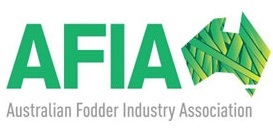
This article is bought to you by. Australian Fodder Industry Association.
By Angus Brown | Source: MLA
As we move into the new financial year, grain price have found a bit of strength. Winter is largely yet to see the traditional rally in feeder cattle prices. With Grainfed cattle prices remaining relatively steady, lotfeeder margins have taken a bit of a hit, and it might take until harvest starts to get much relief.
After bottoming out in May, local grain prices have shown some recovery. Rising international values and a continued lack of rain in northern cropping areas has seen grain prices increase $30/t in northern markets. In the Riverina, feed grain prices have rallied up to $50/t, or 14%, since early May, which has taken price back to February levels of $400/t.
Ad -The Australian Fodder Industry Association or AFIA's Annual Conference is on the 29-31 July. Click here for more info or to become a member today - Ad
Ad -The Australian Fodder Industry Association or AFIA's Annual Conference is on the 29-31 July. Click here for more info or to become a member today - Ad
In the south, Medium Fed Feeder Steer prices have remained relatively steady since rallying in April. At 325¢/kg lwt feeders remain good selling relative to lighter young cattle. In the north the story is similar. Short Fed Feeder Steers are averaging 309¢/kg lwt, which is up slightly over the last month.
Figure 1 shows the 100 Day Over the Hooks Grainfed Steer price for southern Queensland has remained relatively steady since a rise in early May. Despite rising input costs, the total level remains well under the price of outgoing cattle, and well under southern input cost.
A large part of the north/south input cost disparity is sorghum versus wheat. For northern input costs we use sorghum, which was last week priced at $344/t delivered Darling Downs. Wheat in the same market is at $400/t, the same as the Riverina. As such, northern lotfeeders using wheat will have similar inputs costs to those in the south (Figure 2).




Figure 3 shows southern margins have fallen back to $60 per head after a brief respite. In reality, $60 per head is not enough to pay overheads.


New crop prices suggest at least southern lotfeeders will get some relief in December. New crop feed wheat and barley prices are $60-80 per tonne lower in the south. In the north, the new crop discount is not as large, just $20-30/t.
New crop grain prices will take $70-90 per head off the input costs in the south. All else being equal, which it never is, the lower price of grain will take southern lotfeeder margins to $138/head.
Ad -The Australian Fodder Industry Association or AFIA's Annual Conference is on the 29-31 July. Click here for more info or to become a member today - Ad
Ad -The Australian Fodder Industry Association or AFIA's Annual Conference is on the 29-31 July. Click here for more info or to become a member today - Ad
Key points
* Rising grain prices have squeezed lotfeeder margins over the last month.
* Feeder prices have remained steady, but have a little room to move higher in late winter.
* Lower grain prices in the south at harvest should see improved lotfeeder margins.
What does this mean?
Tightening lotfeeder margins is never a good thing for feeder cattle prices. However, in the last year we have seen a lot tighter margins and strong feeder values maintained. As we move further into winter, tightening cattle supply could see grainfed prices rally and help lift feeder values. However, it is increasingly looking like we might have to wait until the new harvest is coming in before we see any real upside for feeders.











Share Ag News Via